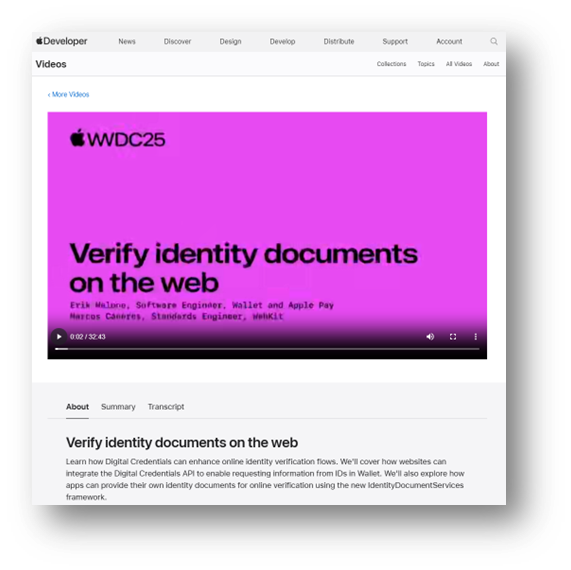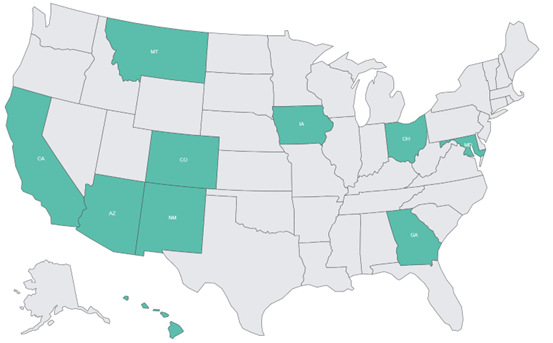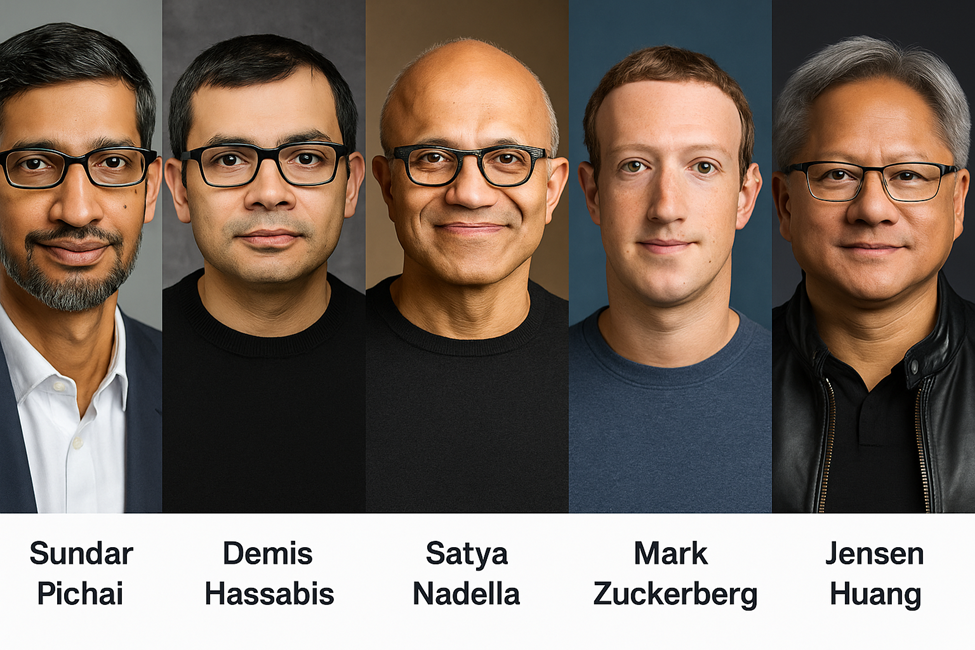Apple is disrputing KYC - and it's awesome
- Derek Corcoran

- 24 minutes ago
- 4 min read

I’ve been working on account opening and loan applications for around 20 years – from back when scanning paper forms was state-of-the-art to today’s mobile customer experiences. And at this year’s WWDC 2025 (Worldwide Developer Conference) Apple made an announcement that is one of the biggest changes to KYC, ever. Apple Verify with Wallet for Web.
Background
About 8 years ago, I was part of the leadership team at Avoka – a fintech focused on account opening and customer acquisition for financial services. We were taking photos of driving licenses, prefilling details from Facebook, anything to take friction out of the KYC (Know Your Customer) experience.
Then I had an idea – why can’t I store my personal details securely on my phone (Name, Date of Birth, SSN, Identity Document, etc.) and then choose when I want to share it with an organization like a bank and unlock access to the data using my biometrics?
We mocked up a concept as shown below.


We got Samsung interested in the idea and working with the brilliant Nirmal Solanki, we built a prototype with Samsung on the Galaxy S8 (yeah, that long ago!). The prototype used the secure Samsung Knox partition of the device to store the personal information (not in the cloud). The prototype worked and they showcased it at Money 20/20 in Las Vegas that year as part of Samsung Pass where you could apply for a bank account and meet the KYC requirements by ising your fingerprint to unlock stored identity information on the device. But it never got the green light to go into production for various reasons.
But I always thought this made sense. My phone has become far more central to my identity than my wallet. So, lets use it for account opening and loan applications to meet KYC requirements.
Apple WWDC 2025

Fast forward 8 or so years and in June of 2025 at WWDC, Apple announced Apple Verify with Wallet for Web. The “for Web” bit needs a drumroll introduction – its important.
What this means is that people can store their identity document (like Driving License) securely on their phone in the Apple Wallet and then unlock access to that document to share it with an organization that needs it for the purposes of identifying the individual. And they can do it from ANY WEB PAGE through an API call. So any organization (Government, Healthcare, Banking, Insurance, Car Rental, etc) that might have a valid reason to require access my identity document as part of an onboarding or account opening experience can do so, securely and, with my permission.
Verify with Wallet transforms the clumsy photo ID experience (find the ID, take a photo, ensure the image is clear etc.) to a streamlined and secure transaction. The solution leverages open standards such as mdocs (ISO/IEC 18013-7, ISO/IEC 18013-5) , W3C Digital Credentials API, FIDO CTAP (cross-device transport). Verify with Wallet works on any browser (mobile or desktop) but requires an Apple Wallet.
2-Step Process
STEP 1: The first step in the process is a one-time effort to add your identity document to your Apple wallet. If you’ve used your phone to pass through TSA security checkpoints at the airport, you already have your ID in your Apple Wallet.
What you may now know is that as part of this process, Apple is verifying the details of the document with the issuing authority. For example, the DMV in the state that issued your driving license.

Now you have a secure issuer-verified copy of your identity document in the Apple Wallet on your phone with access protected by your biometrics.
STEP 2: Then you visit a website (e.g. Bank website) to apply for a product, and the organization needs to verify your identity. The web page asks if you want to use your ID stored in your Apple Wallet. You say yes. Apple lets you know exactly which pieces of information will be shared, and you unlock the Identity Document with your biometrics. Apple instantly shares your verified and authenticated information with the organization that requested it. And KYC requirements have been met.
In banking, we still need to check OFAC, Watchlists, Fraud Risks, etc…but all of that hinges on a verified identity document with your name, DOB, address etc. as that information is used to look up the individual on the watchlists.
Can I use this today?
Yes, for certain industries and certain states.
Industries that can access this functionality (based on need):
• Financial Services
• Government
• Car / Scooter Rental
• Alcohol purchases
• Access (Physical Security)
• Air travel
• Gig economy
• Healthcare
• Hospitality
• Insurance
• Ticketing
Supported document issuing States:

• Arizona
• California
• Colorado
• Georgia
• Hawaii
• Iowa
• Maryland
• Montana
• New Mexico
• Ohio
Supported Devices:
• iPhone 11 or later
• iOS 26 or later
Information that can be shared:
• Issuing authority
• Document number
• Document Issue date & Expiration date
• Given name
• Family name
• Address
• Date of birth
• Age in years
• ID photo
• Eye color
• Hair color
• Height
• Weight
• Sex
• Veteran status
• DHS compliance (Real ID)
What’s next?
Obviously, Apple will roll out this functionality to more and more states. And Google has created a similar capability based on the mdocs standard that allows Android users to leverage their identity document in their wallet for verification purposes.
So perhaps the work we did with Samsung on Android 8 years ago will come to fruition, albeit very different 8 years later. And finally, identity verification will be easy, secure, and reliable.




Comments